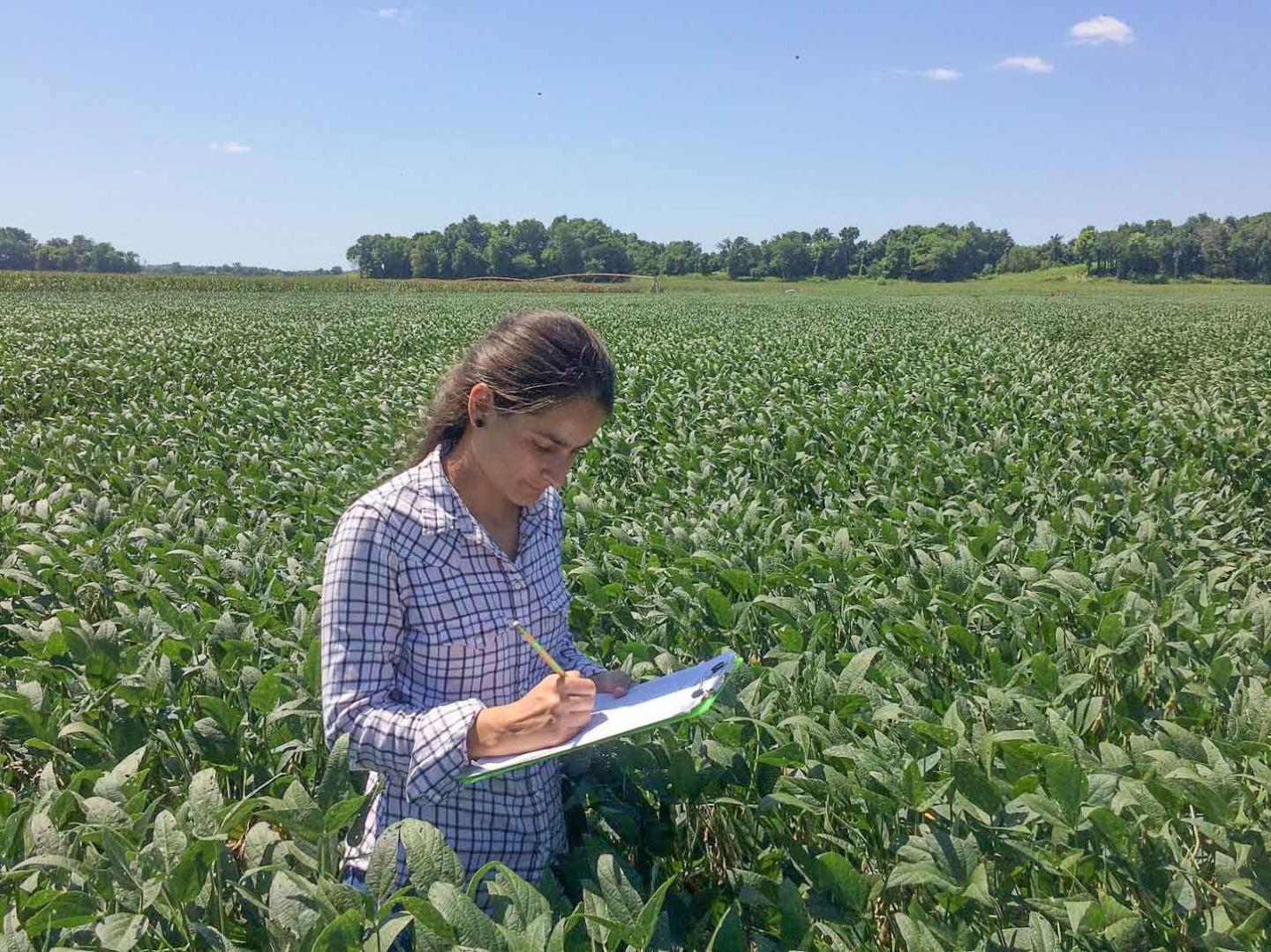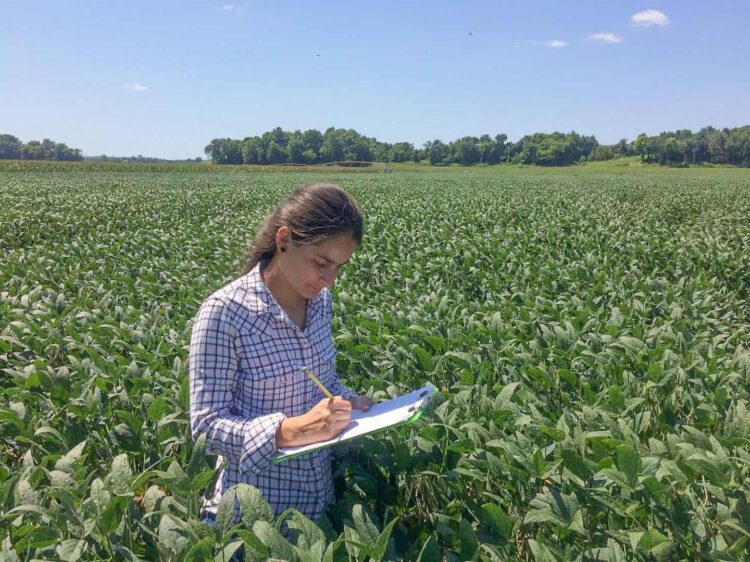
Credit: Ahmad M. Fakhoury
Sudden death syndrome (SDS) is one of the most destructive diseases of soybean, with losses of nearly 1.7 million metric tons in 2014. The disease is especially severe in the Midwest and North-Central regions, where conditions of high soil humidity and cold weather help the disease grow. SDS is difficult to control as current management practices, which include using fungicide seed treatments and tolerant soybean varieties, can add production costs, reduce profits, and can ultimately be ineffective.
Recently, Mirian Pimentel, a PhD student, and a group of plant pathologists at Southern Illinois University, discovered a promising new tool to fight SDS. They observed that several biological control agents (BCA), or beneficial fungi, were able to substantially reduce the growth of the causal pathogen agent of SDS. In some cases, these agents even overgrew the pathogen, parasitized it, and displayed evidence of “feeding” on it.
They found that isolates from the genera Trichoderma showed the highest inhibition of SDS pathogen growth and even reduced root rot. Additionally, these agents interacted with soybean plants to colonize their roots and activate plant defense-related genes, which help the soybeans fend off attacks from pathogens.
“Our results highlight the potential of Trichoderma isolates native to soybean production fields in inhibiting pathogen growth and reducing SDS severity, providing additional tools for biological control in soybean production,” explained Dr. Ahmad Fakhoury, a plant pathologist at Southern Illinois University. “This research highlights the possibility for future implementation of biological control in soybean production to manage SDS. The integrated use of biological control with other management practices can be valuable for sustainable and cost-effective protection of soybean from yield losses.”
“This research provides an overview of how biological control can be used as a tool to fight important plant diseases that threaten global food security,” Pimentel said and encourages the agriculture industry to develop technologies to optimize the activities of these biological control agents in the field.
These promising results have led Fakhoury and his research team to further investigate different biological agents-pathogen interactions. Their current research will help them better understand how different isolates of the BCA T. harzianum interact with the SDS pathogen.
For more information, read “Trichoderma Isolates Inhibit Fusarium virguliforme Growth, Reduce Root Rot, and Induce Defense-Related Genes on Soybean Seedlings” in Plant Disease.
###
Media Contact
Ashley Bergman Carlin
[email protected]
Related Journal Article
http://dx.





